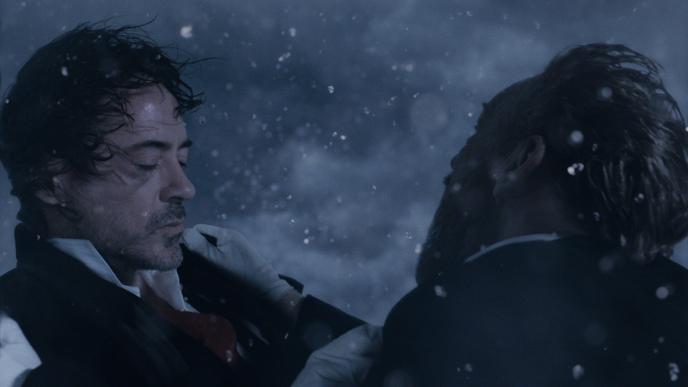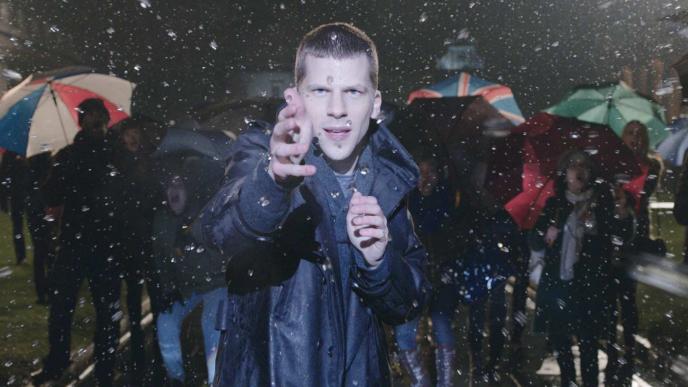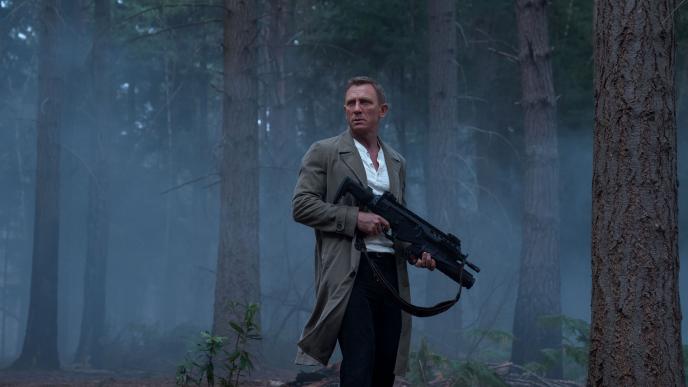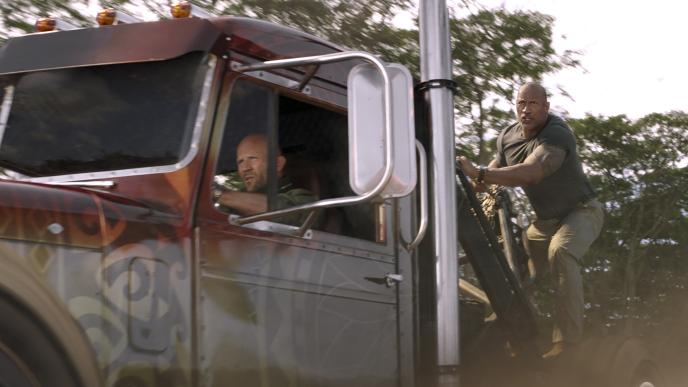
Sherlock Holmes: A Game of Shadows
The sequel to 2009’s box office smash, Sherlock Holmes, this film sees Robert Downey Jr. and Jude Law reprising their roles as Sherlock Holmes and Dr. Watson, with Guy Ritchie once more at the helm. Framestore created nearly 550 shots for Sherlock Holmes: A Game of Shadows, including the film’s climactic encounter at the Reichenbach Falls and a thrilling battle on a speeding train, as well as numerous elaborate environmental shots and set extension work, a scene taking place inside a gun, and some ingenious, near-subliminal puffs of breath.
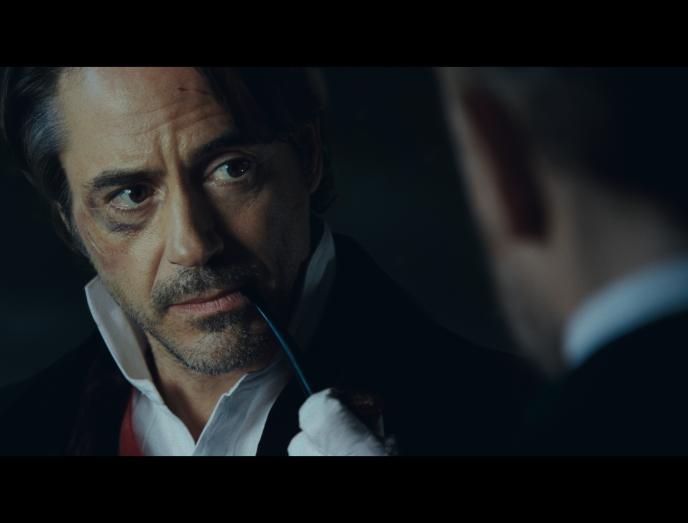
Rain of Terabytes
At Shadows’s gripping climax, Holmes and Moriarty meet in a fortress high in the Swiss Alps, built above the source of the colossal Reichenbach Falls. They play chess and then – as so often happens – turn to fisticuffs. Holmes realizes that the only way to definitively best his nemesis is to seize and pull him over the balcony into the waterfall below, even at the price of near-certain death. The actors – Robert Downey Jr. and Jared Harris – were filmed for the sequence using a technique that is becoming increasingly popular with VFX teams. They were attached through harnesses to two gigantic KUKA robot arms.
Unsurprisingly, the water itself was the biggest headache. Ben White was Framestore’s CG Supervisor for the project. "In the end we broke up the water into several segments rather than trying to do it in one piece, with each segment being made of multiple layers to achieve the complexity we needed. We had a team working in Naiad, on the water coming down from above, and we had another team working in Houdini providing a different element for the lower part of the waterfall where it blends into the live action elements. We also added CG and live action elements of water vapour and mist being pulled away from the surface which helped to give a special relationship to the falling actors in this huge space. The live action elements were most successfully used when we’re looking straight down at the end, because essentially the camera’s locked off, so the photographed element worked well there.”
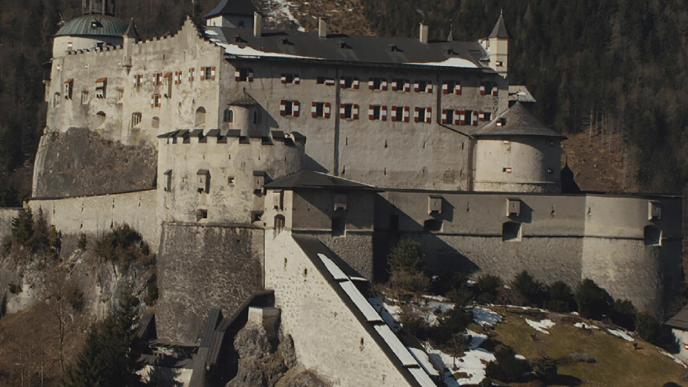
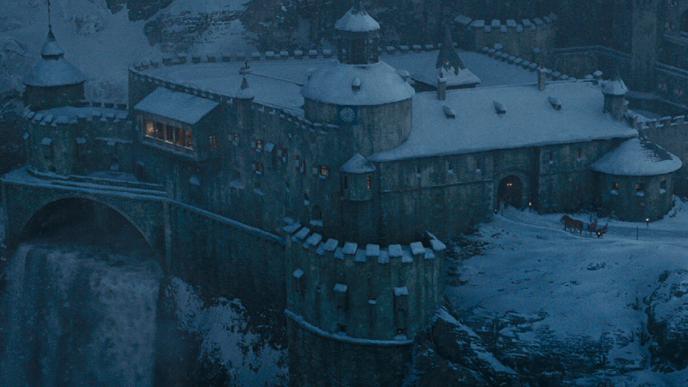
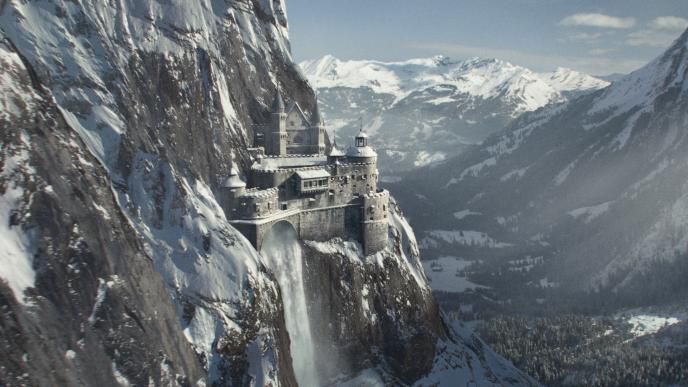
Trained Assassins
The other key sequence that Framestore created for Shadows takes place on a train speeding through nighttime countryside. A band of assassins, disguised as British soldiers, has boarded the train and plan on dispatching Holmes and Watson in a tornado of gunfire. Needless to say, our heroes are up to the challenge and explosively foil their adversaries.
Save for one (studio shot) carriage, the entire train and environments through which it passes were created by Framestore. For interior work, there was a lot of green screen insertion of backgrounds as well as complementary reflections in the windows. As the fight develops, Holmes and Watson climb out onto the side of the train, so extensive digital environments were required. Many background plates were shot on panorama-cam and put in by compositing, but the entire foreground of the shot had sometimes to be digital, so White’s team created plants, bushes and shrubs.
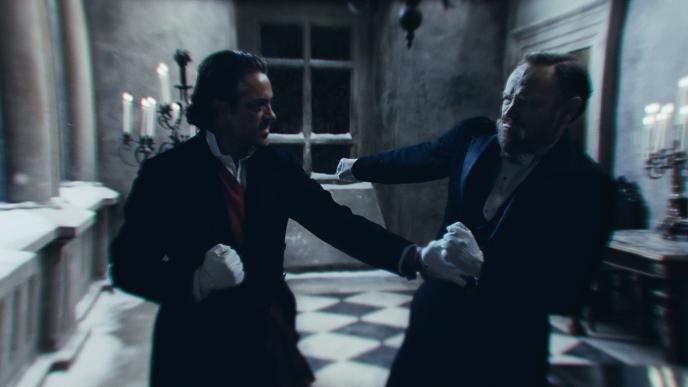
Pulling the trigger
Other work by the CG team featured in the sequence includes a characteristically Ritchie journey through the inside of a gun which is pointing at Holmes as it is fired. We see the pin striking the percussion cap of the bullet and we then see the bullet fly past the camera ‘inside’ the barrel as it flies towards the end (which Holmes has sensibly spiked and which then blows up in the face of his would be assassin). “We pre-vizzed and conceived the shot working with Chas Jarrett (VFX Supervisor),” says CG Supervisor Ben White, “There is a lot of very subtle work in it – lots of attention to detail in terms of shading and texturing, as well as some lovely depth-of-field work put on by the compositing team.”
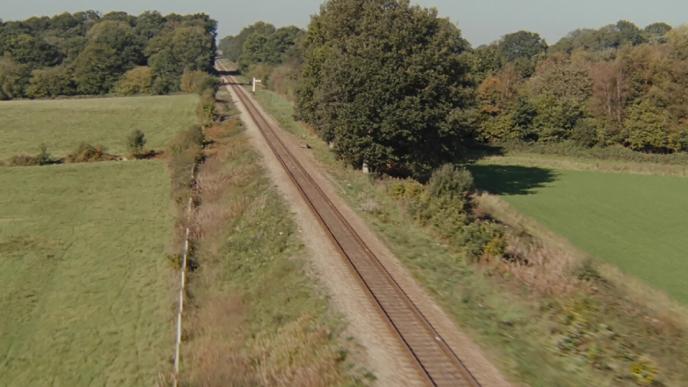
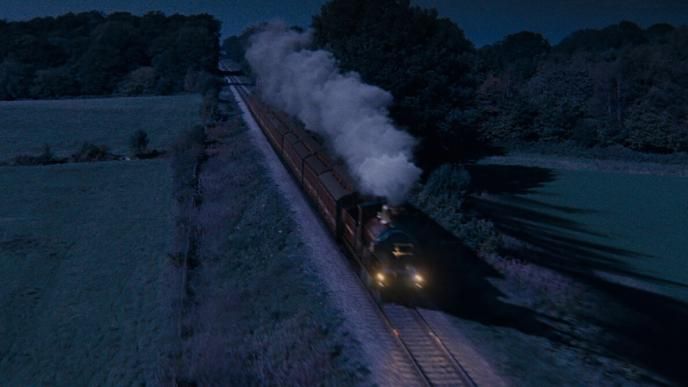
Breath of Life
Another subtle touch that pleased Ritchie and producer Joel Silver hugely was an effect that is all too easy to get wrong – the addition of tiny puffs of condensation caused by characters as they speak and breathe in an ostensibly cold environment. The Swiss Alps castle scenes were all shot in a studio, so to convey the atmosphere of a freezing Alpine night the Framestore team came up with an ingenious solution. “We developed a reference system using real filmed footage from a cold room,” explains Sirio. “We found different types of ‘puff’ representing a variety of syllables, and then used the audio soundtrack to trigger the appropriate puff. It’s a nice hybrid of real elements with an automated approach and was very controllable and quick. A couple of our artists turned out to be intuitively good at this, and they ended up doing 100 or so shots of breath enhancement. You’ll barely register it when you see it, but that’s really the point – it’s only good if you don’t notice it.”
